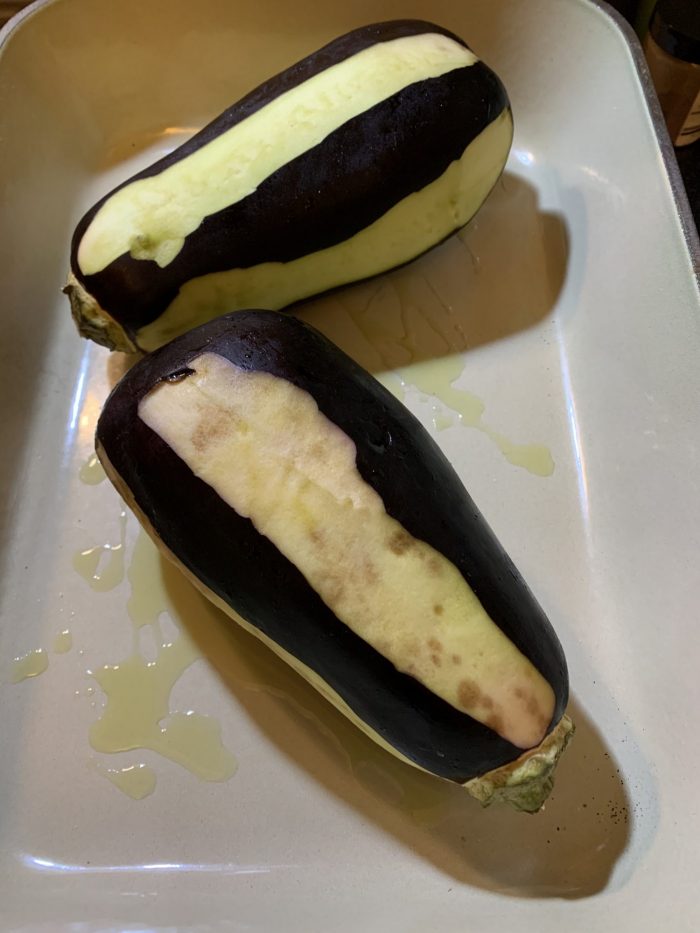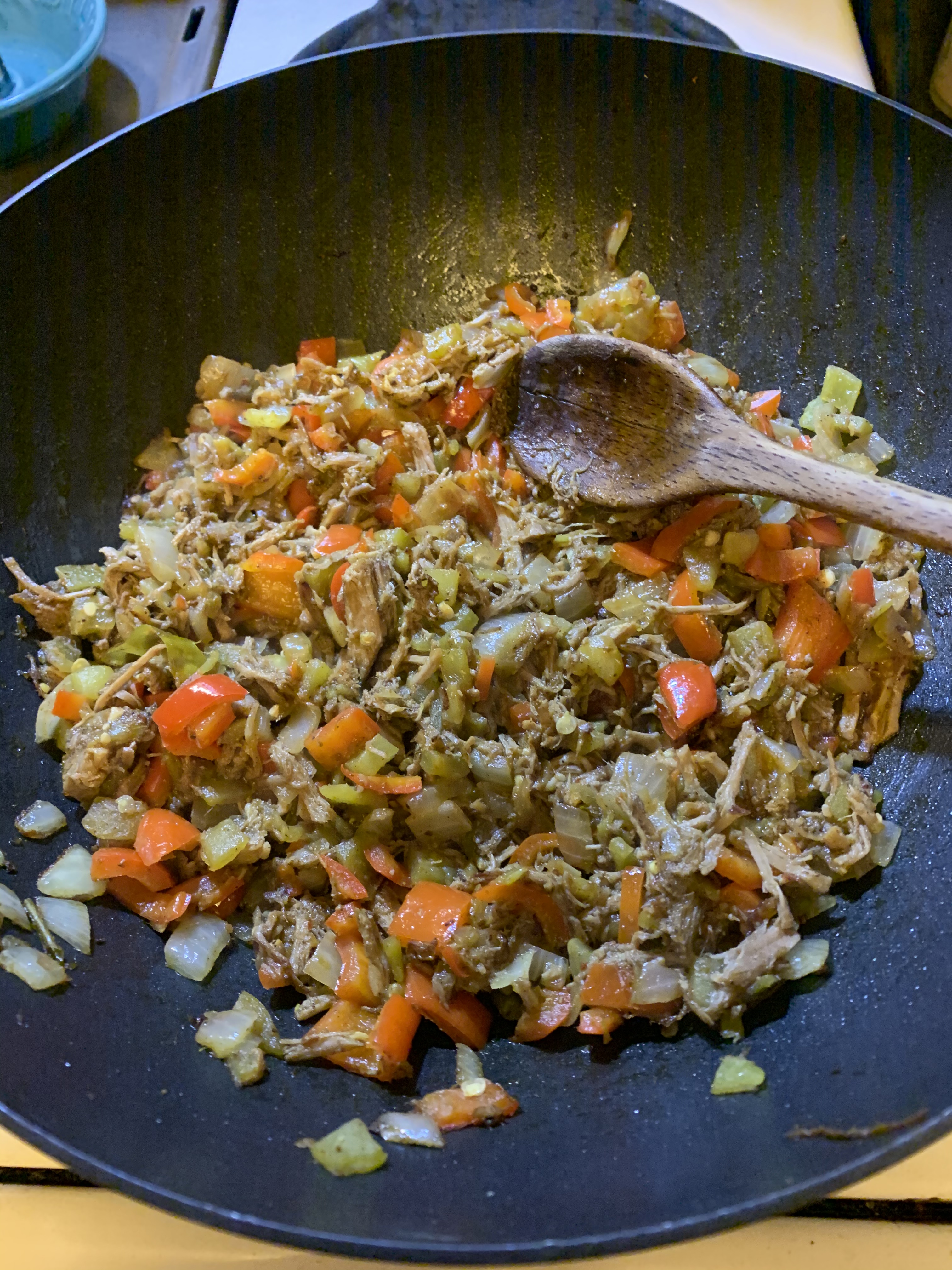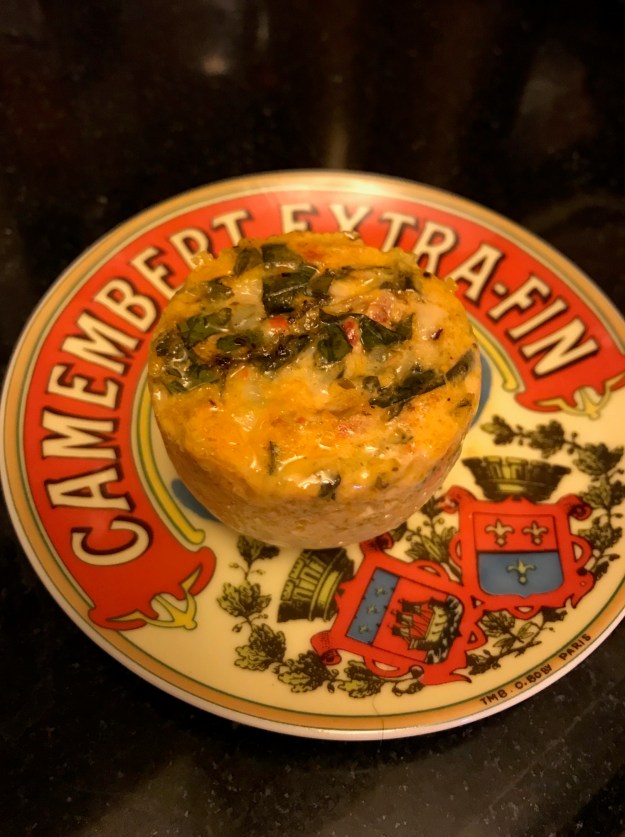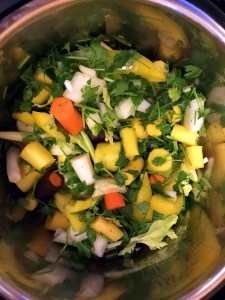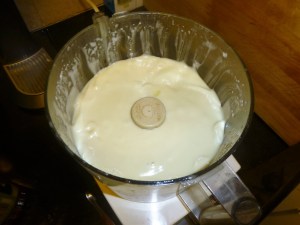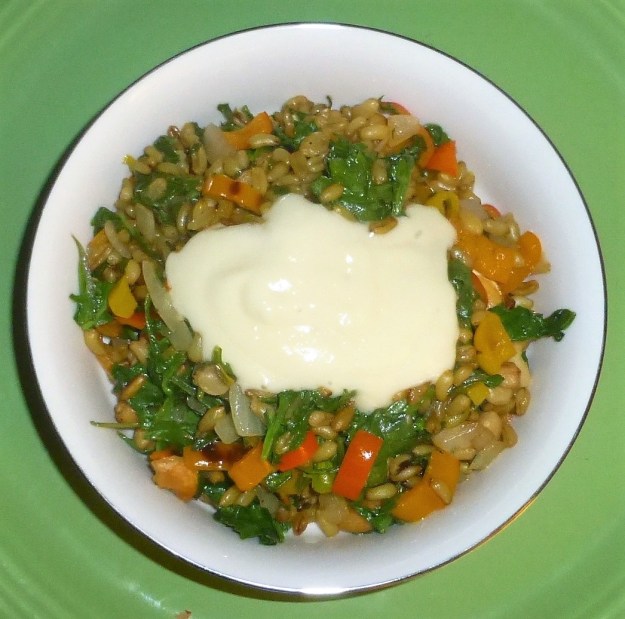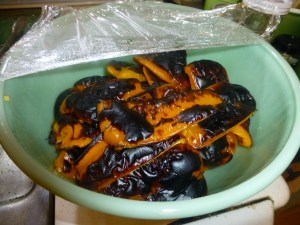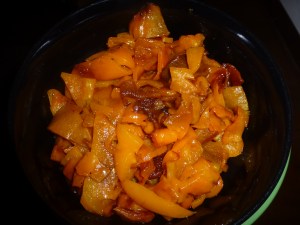
Still summer, still hot. Time again for a simple cold soup (many call it “liquid salad”), perfect for that moment your garden is in its annual throes of tomatorrhea, when your plants imitate the ketchup bottle in Richard Armour‘s famous poem: “none will come / and then a lot’ll.” Even if you don’t grow your own tomatoes, local supermercados, feiras, and grocery stores will be happy to provide you with a cornucopia of ingredients.

This particular verion of gazpacho was built from a foundation laid by the Spanish chef and international hero, José Andrés, and published in the Washington Post. I guarantee that if you follow his instructions to the letter, you will have an excellent bowl of soup, if slightly different from the one offered here.
Some people claim that the word gazpacho originated in Arabic, others say it came from Greek; the Real Academia de la Lengua Española, which is the final word on Spanish words, has come down firmly in the camp of “we aren’t sure.” One thing that IS clear is that the modern version of red gazpacho dates back no further than the 16th century, because the Old World (although they didn’t know it) was waiting for Columbus to bring back tomatoes and peppers. [Rock fans know this from the Neon Park illustration on the cover of Little Feat‘s album Waiting for Columbus. But I digress.]
[One further digression: other scholars assert that Hernán Cortés, not Columbus, introduced the Peruvian tomato to Spain in 1521. Regardless of who performed the introduction, it was widely embraced.]
Most culinary historians date gazpacho’s birth sometime between the 8th and 15th centuries, when the Ottoman Empire’s reach extended to Spain; others credit the Moors with a roughly contemporaneous version. Still others say an early precursor dates to the Roman Empire, and there are even some who push the date back as far as the Biblical book of Ruth. One thing that virtually all of them agree on, though, is that the first person to publish a recipe for it was the chief confectioner at the court of the Spanish kings Felipe V and Fernando VI, Juan de la Mata.

His treatise, Arte de Repostería (Art of Confectionery), was published in 1747 and is still studied. Even at that late date, tomato had not gained the preeminence it has today, and de la Mata’s recipe called for bread, water, anchovy bones, garlic cloves, vinegar, sugar, salt, and oil. [For more on the history of gazpacho, I commend the James Beard Award-winning author Clifford A. Wright, who not only has his observations on the origins of this delightful soup, but recipes as well.]
Throughout its ancestral home of Andalucia, and indeed throughout the entire Iberian peninsula, gazpacho evinces itself in a wide variety of textures and flavour profiles. Some are chunky, others puréed; some feature tomato and some don’t; certain cooks absolutely insist that bread crumbs have to be in the mix, while others are happy to incorporate such exotic flavours as watermelon or avocado. So my advice to you would be to keep an open mind, paw through a bunch of recipes, and find the one that zings the strings of your papillae.
Please don’t feel any sense of shame if you use canned tomatoes rather than fresh; some days, the local crop may be woody or just plain bland, and the canned option (particularly if fire-roasted) may yield a better finished product. But please do use the best olive oil and vinegar that your budget will allow. My last batch contained some artisanal olive oil we purchased directly from the producer in Marvão, just barely on the Portuguese side of the Spanish border. The vinegar was hand-carried home from Brauerai Gegenbauer in Vienna, and their products are just crazy great. You can use a good Sherry vinegar, but I like to add some Gegenbauer tomato vinegar to a glug of Lustau Sherry, both for the sweetness and the rounded texture.
As is true with many of my recipes, this is merely one of a gaggle of routes to the destination of yum. To usurp (and slightly corrupt) the title of a famous book/movie, Eat, Play, Love.
INGREDIENTS
1 liter / 4 cups polpa de tomate/tomato sauce (a combination of tomato paste and tomato juice can be substituted)
390g / 14 oz. can chopped tomatoes (check to see if salted or not)
600g / 21 oz. Padrón peppers (shishito peppers can be substituted)
1 cucumber, peeled and chopped (seeding optional)
5-6 cloves garlic (but I’m a garlic fiend, so you may want fewer)
100ml / 3.5 oz Sherry
250ml / 14 oz. extra virgin olive oil
100ml / 3.5 oz vinegar
Optional toppings/add-ins: croutons, parsley, diced tomato or bell pepper, toasted almonds, piri-piri sauce or Tabasco, cilantro
DIRECTIONS
Put all the ingredients into a blender. Blend on medium until desired texture is reached. Transfer to pitcher and chill (both you and the soup) for at least 2-3 hours to allow flavours to meld (the garlic may not completely mellow out until the following day). Garnish as the spirit moves. Serve.


